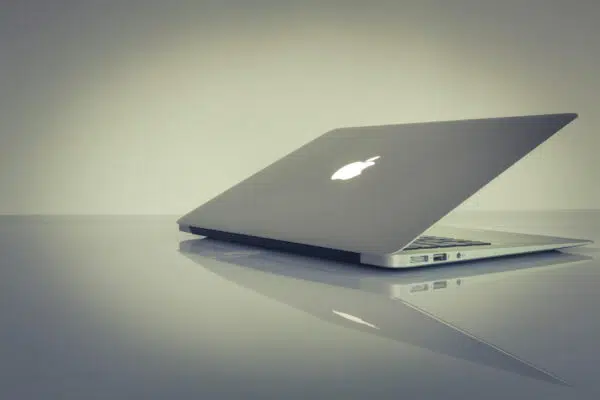
How to Clean Mac OS: Maintenance for Mac
Sooner or later, every active Mac user realizes that the device needs regular care, which is actually a routine computer maintenance. Certainly, the rules of a good care of your Mac machine apply no matter what operating system you run. They are to follow when you ask yourself: “How to clean my Mac OS X?”, and when you look for a proper guide how to clean Mac OS X Yosemite. The same advice will help you if you have, say, macOS Sierra installed on your computer. And first, you should naturally get acquainted with the basics of the maintenance procedure or, in plain words, learn what Mac maintenance actually means.
Mac maintenance, which is basically the same that any computer maintenance, means a series of routine procedures to preserve your Mac in a proper condition in which it ensures satisfactory performance in accordance with specs. As regards hardware, maintenance includes cleaning from dust and small trash, and, once in a year or even less frequently, reapplication of the thermal grease. Also, it is necessary to observe basic rules concerning the place where your Mac is located to keep it away from excessive moisture, heat, and cold. As regards to the software, you certainly must follow the procedure of proper shutdown. Besides, you need to regularly delete unnecessary apps, and clean your hard drive from all kinds of junk like old cache elements, log files, and trash. Although being somewhat time-consuming, those simple procedures are not so difficult to perform remembering that they safeguard the proper functioning of your Mac.
Maintenance Tips: The Manual Procedures
Let us start with general procedures, which take so little time and effort especially if you make them part of your habit.
Firstly, unless your Finder Icon Previews is disabled, try to keep your Desktop clean from unneeded files. On your Desktop, you should only have those files that you frequently use. Having on your Desktop any other stuff, especially pictures, takes up your system’s resources and must be considered as absolutely purposeless.
Secondly, you should control the Downloads folder. It fills up very quickly and begins to affect your Mac’s performance as the amount of free space on your hard drive goes down from optimum. The free storage becomes insufficient and the machine’s speed decreases. That is especially the case with Time Machine backup process, which requires considerable resources. Get rid of the redundant content in the ‘Downloads’ and the result will be a notable speed gain.
Thirdly, follow the proper complete procedure of Emptying Trash. When you just clean your storage from junk moving it to Trash, it is only a part of the job. In order to complete the task of freeing your Mac from unneeded stuff, you still have to Empty Trash. For this to be done, either use scheduled Trash removal or perform the emptying procedure on your own.
Removing Cache Items: Do Not Forget
At this point, Mac maintenance really becomes a time-consuming matter. What is the cache? In very plain words, it is no other than some data stored on your computer for quick access either to various data used by apps installed in your system or to internet web pages. Thus when you delete caches you kind of delete saved pages with data about visited websites. The right cache items make it easier for the application to access and load necessary data and your browser uses its cache (so-called page cache) to quickly access the already visited websites. The process of cache accumulation is hard to monitor (no speed indicator), and you don’t realize when its amount exceeds the limit and starts to cause considerable delays. Besides, cache sometimes gets corrupted, which will slow down corresponding apps and the entire system. Hence cleaning your machine from the cache is a must, and should be performed as an important regular procedure.
You will find system cache in Library/Caches and user cache in ~Library/Caches. In the Finder, hit cmd+shift+G to move to Go menu, then Copy & Paste either directory to open it. Make your cleaning.
How Do I Uninstall Apps and Delete Leftovers?
Most users have quite a few apps that they never or almost never use. Many such programs run in the background, performing update checks or similar functions. You actually get no benefit from such apps, which are just undermining your Mac’s performance. Go to Finder > Applications and drag the unneeded apps to Trash, then perform Emptying Trash to actually get rid of them.
But reaching this point does not mean that all files pertaining to the unused applications have been actually removed. There are files outside the ‘Applications’ folder, which are called leftovers. Most of them can be removed via Library/Application Support and ~Library/Application Support.
What is a specialized application for Mac maintenance?
If you perfectly know all main junk locations and necessary commands, you certainly can rely on the manual cleaning of your Mac (though it’s a time-consuming choice).
However, if you wish to save time and focus on using your Mac rather than maintaining it, you have specialized software products for your service. What is Mac OS cleaner? There are plenty of such programs and we’ve tried one of them, MacFly Pro. The application can safely locate and remove application leftovers, uninstall unused programs and clear caches. The great solution in case you don’t want to waste your time and clean Mac manually.
SpeedMac.org team tries to keep its focus on everything related to IT and be worthy of calling ourselves professionals. No matter what issue you have about your Mac or iPhone, we are here to help you and provide with solid facts and helpful tips.
SpeedMac.org 2023